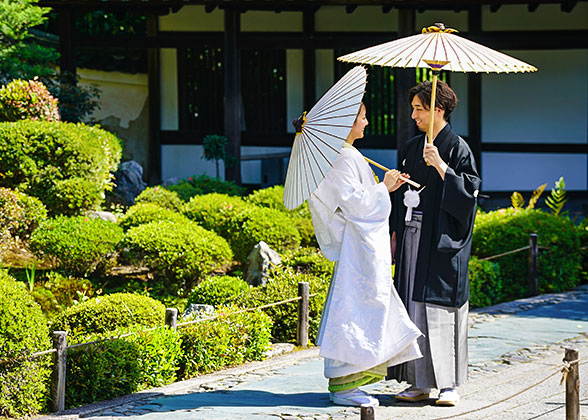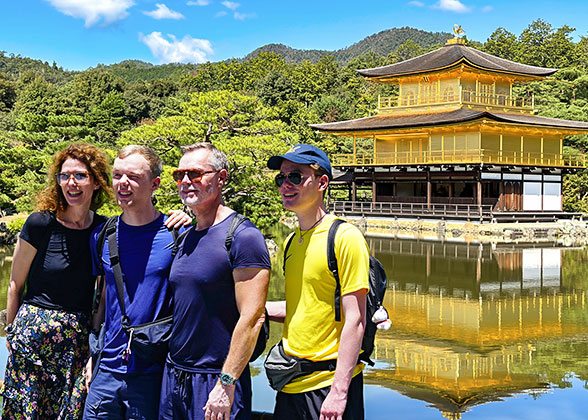Akiyoshidai Plateau
Situated in Mine City, Yamaguchi Prefecture, Akiyoshidai Plateau is the largest Karst plateau in Japan. It is a basin-like tableland formed by Paleozoic limestone. Underground, there are numerous limestone caves eroded by rainwater.The entire plateau was designated as Akiyoshidai Quasi-National Park in 1955, including the western part and the eastern part, of which the eastern part is the sightseeing area and is covered mainly by grass. In order to protect the underground limestone caves and conserve the grassland, there is a controlled burn event called Akiyoshidai Yama-yaki conducted on the third Sunday in February annually since about 600 years ago.
From Undersea Coral Reefs to Karst Plateau
Akiyoshidai Plateau is a result of the plate movement - a masterpiece totally by nature. About 350 million years ago, it was a large group of coral reefs in the sea. Under the effect of tectonic forces, the coral reefs were uplifted and exposed to the air. Gradually the undersea coral reefs changed into limestone on the plateau. Rainwater continuously dissolves the limestone, which forms the limestone caves and limestone pools we see now with a variety of stalactites and stalagmites in. On the plateau, you may also see fossils of marine organisms that were frozen by time.Must-go Sites of Akiyoshidai Plateau
1. Akiyoshidai Observation Deck
It’s the best spot to overlook the magnificent Karst topography. The beauty of Akiyoshidai varies with the four seasons, of which spring is the prettiest. The grassland and scattered protruding limestones together show a perfect color match of green and white. Going on a short hike, biking or camping on the plateau are good ways for you to be close to nature and enjoy yourself.Besides, there is a free resting space called Karstar on the plateau. It is also an information center and a café, offering a good place for visitors to admire the scenery.
2. Akiyoshido Cave - Largest and Longest Limestone Cave in Japan
There are over 400 limestone caves under Akiyoshidai Plateau. Akiyoshido Cave is the largest and longest among them, even in the whole Japan. It’s 10.7 km (6.6 miles) long in total, of which a 1-km-long part is open to the public. Three spots are the most representative in Akiyoshido: the “100 Plates”, the “Golden Pillar” and the “Blue Patio”.The “100 Plates”: Numerous terraces of limestone pools with water in them, looking just like piles of white plates.
The “Golden Pillar”: A huge stalactite column which is over 15 meters (49 ft.) high and 4 meters (13 ft.) in diameter. Its enormous size makes it quite striking.
The “Blue Patio”: This space is about 30 meters (98 ft.) high and 50 meters (164 ft.) wide near the entrance of Akiyoshido Cave. The underground water in the cave reflects the sunlight and make the ceiling look blue.
Tips:
1. Inside Akiyoshido Cave, the temperature is about 17 ℃ (62.6 ℉) all year round, warm in winter and cool in summer. Please wear appropriate clothes before entering.
2. There is an elevator in the middle of Akiyoshido Cave connecting to Akiyoshidai Observation Deck. You may walk to Kurotani side, take the elevator to the observation deck and enjoy the view of the plateau. You can re-enter the cave vice versa by showing your ticket stub.
3. Paths inside the cave may be slippery with many steps. Please take care while walking.
3. Kagekiyodo Cave - a Samurai General’s Hiding Place
Around 800 years ago, a samurai general - Kagekiyo was defeated in the war and hid himself in this cave. Thus the cave got the name “Kagekiyodo”. Inside, you may admire the fossils of corals that were inset into the walls, looking like beautiful patterns designed by nature.4. Taishodo Cave - a Maze of Caves
The entrance of this cave is hidden in the forest, giving it a mysterious ambience just like the interior, which is intricate like a maze. Local people used to hide their cattle in the cave during wartime. Exploring the cave will be of great fun.Opening Hours & Ticket Fare
|
Cave |
Opening Hours |
Entrance Fee |
|
Akiyoshido |
Mar. to Nov.: 8:30-18:30, last entrance at 17:30 Dec. to Feb.: 8:30-17:30, last entrance at 16:30 *Elevator entrance & Kurotani entrance: 8:30-17:30, last entrance at 16:30 |
1,300 JPY Adventure Course: 300 JPY |
|
Kagekiyodo |
8:30-17:15, last entrance at 16:30 |
1,100 JPY Adventure Course: 300 JPY |
|
Taishodo |
8:30-17:15, last entrance at 16:30 |
1,100 JPY |
How to Get to Akiyoshidai Plateau
There are direct buses for visitors to go to Akiyoshidai or Akiyoshido from train stations.1. From JR Yamaguchi Station
Take a Chugoku JR bus to Akiyoshido: 60 minutes, 1,230 JPY. The bus departs every 2-4 hours.2. From JR Shin-Yamaguchi Station
Take a Bocho Bus to Akiyoshido: 45 minutes, 1,170 JPY. The frequency is one bus per hour.3. From JR Higashi-Hagi Station
Take a Bocho Bus and get off at Akiyoshidai: 65 minutes, 1,750 JPY.Or get off at Akiyoshido: 70 minutes, 1,850 JPY.
There are only two buses per day.
Nearby Attraction
Beppu Benten Pond: A natural pool with clear cobalt blue water. It is also the water source for nearby rainbow trout farm. You may drink the spring water and enjoy the trout dishes. It’s about 11 km (6.8 miles) from Akiyoshidai Plateau. You may take a taxi for about 18 minutes, 4,700 JPY to get there.You May Like
-
 7 Days Mini Group Tour for Essence of Japan, to Tokyo - Mt. Fuji - Kyoto - Nara - Osaka from USD2155
7 Days Mini Group Tour for Essence of Japan, to Tokyo - Mt. Fuji - Kyoto - Nara - Osaka from USD2155 -
 8 Days Mini Group Tour to Tokyo - Hakone & Mt. Fuji - Kyoto - Nara - Osaka - Hiroshima - Osaka from USD2771
8 Days Mini Group Tour to Tokyo - Hakone & Mt. Fuji - Kyoto - Nara - Osaka - Hiroshima - Osaka from USD2771 -
 13 Days Private Tour of Tokyo - Kamakura - Tokyo - Mt. Fuji - Kyoto - Nara - Hiroshima - Osaka from USD4443
13 Days Private Tour of Tokyo - Kamakura - Tokyo - Mt. Fuji - Kyoto - Nara - Hiroshima - Osaka from USD4443

